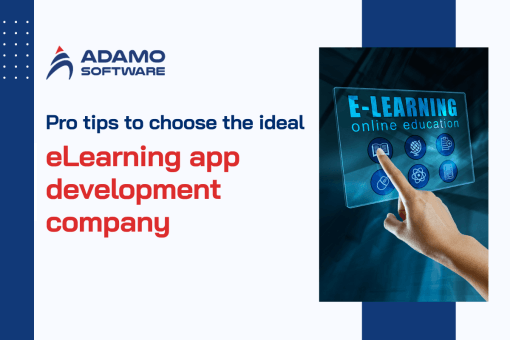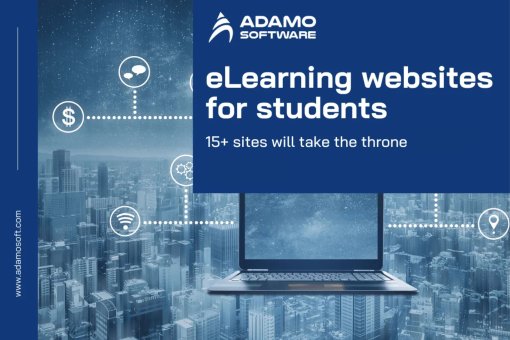Trends in Educational Technology to Watch Out 2026 and Beyond
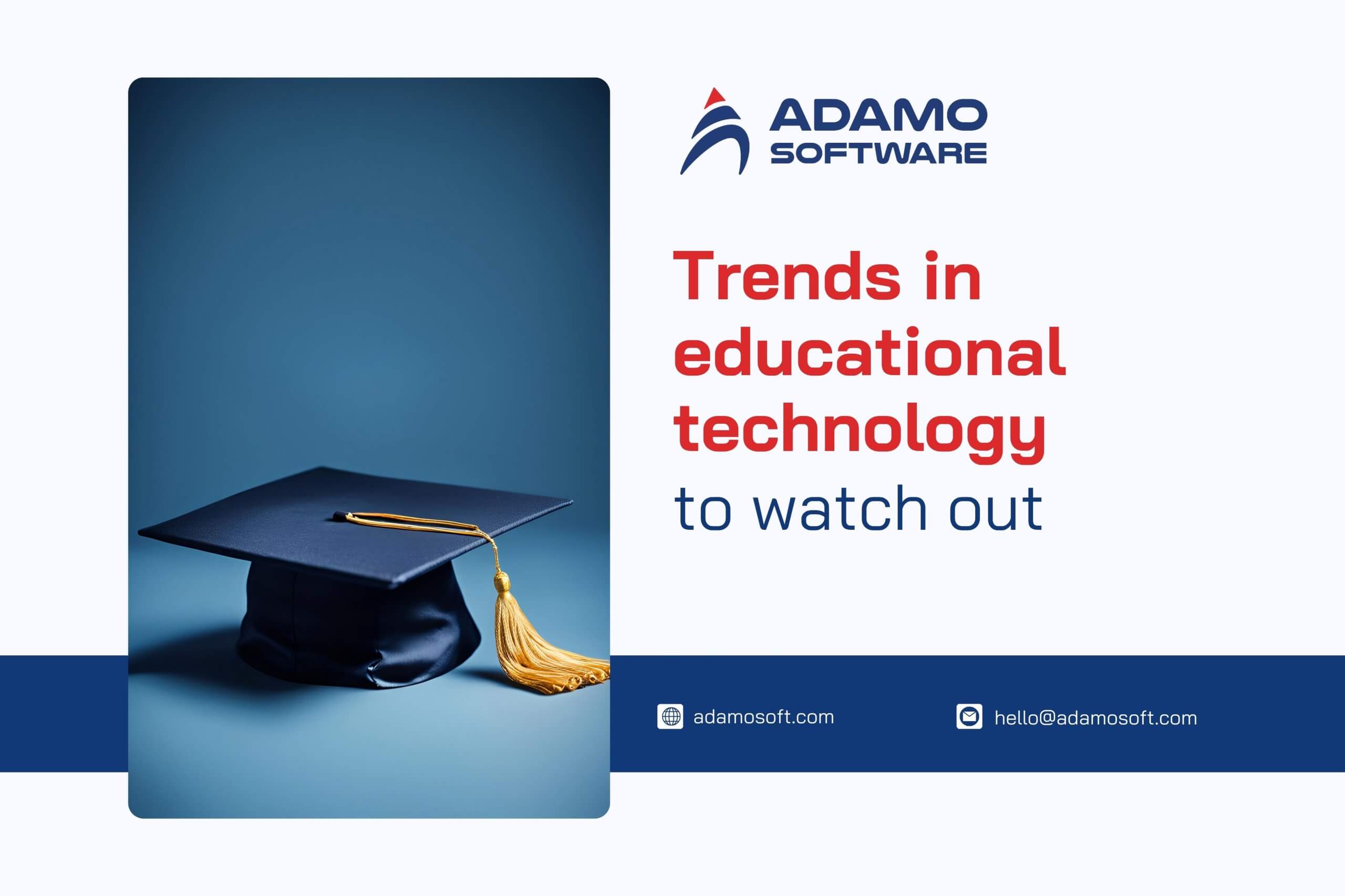
Education is currently experiencing transformation due to the advancement of technology. The blending of modern technology tools and advanced techniques is revolutionizing students learning and teaching processes. It becomes important to stay in touch with current educational technology trends. These trends greatly improve the educational process by making education engaging, more accessible, and individualized.
This article identifies basic trends in educational technology, the effects of new technologies, and the fundamental classroom devices. That will assist educators and institutions in adequately preparing for future changes in education delivery.
I. What is Educational Technology
Education technology, or EdTech, can be digital tools and solutions in teaching, learning, and education management. It includes learning management systems for online classes, electronic textbooks, virtual class environments, and AI-based tutoring systems. As applied to education, technology can make learning more interactive, exciting, and flexible, so students can learn more effectively.
These trends in educational technology have transformed how the learning process is handled and how knowledge is received. Lecturing and other traditional teaching forms are being complemented, sometimes even displaced, by technology-based solutions. This shift makes understanding easier and helps address different learning styles.
Another important concept in educational technology is flexibility. Educational tools like LMS and academic software may be adapted according to the type of learning environment. Moreover, modern trends in educational technology are enhancing the application of such smart technologies as augmented reality, virtual reality, and artificial intelligence to learning processes.
Furthermore, administrative responsibilities are well facilitated by educational technology. It makes work easier, such as grading, taking attendance, and organizing communication between teachers and students. Educators can dedicate their time to instructing instead of dealing with administrative work.
To sum up, technology improves the educational process and influences students and teachers. When adopting state-of-the-art ICT technology solutions, educational institutions can deliver higher quality, fun, and individual educational experiences. And, to obtain the highest effectiveness, it is crucial to follow the trends of educational technologies in the future.
II. How Emerging Trends in Educational Technology Is Shaping This Industry
The new leadership in information technology solutions is revolutionizing the education sector. Such trends make learning as individualized as possible, convenient, and efficient. Here’s how:
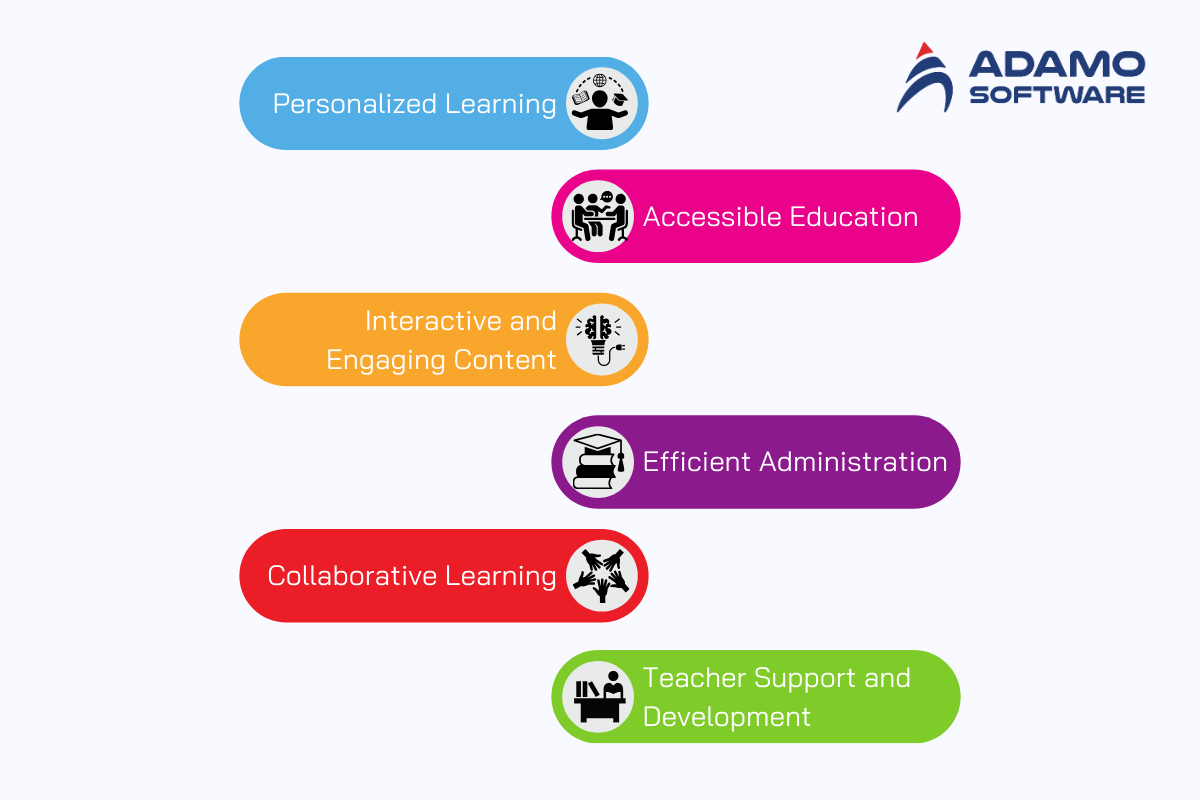
1. Personalized Learning
In this case, advanced educational technologies such as adaptive learning systems employ AI in delivering personal content to students. This delivery model ensures that each child is given the required level of challenge and assistance, thereby improving the student learning process. These systems can access students’ performance, and then modify the speed and content of the lectures delivered in each class.
2. Accessible Education
In the application of emergent technology in education, new approaches to learning are tearing down barriers. The student can gain a quality education from any location. For instance, virtual classrooms and online learning systems have become crucial, especially during the COVID-19 pandemic. These tools help ensure that education does not stop, and kids stay in touch with the school in difficult conditions.
3. Interactive and Engaging Content
New paradigms that are coming up in educational technology show that learning is becoming more interactive. Teaching with technologies like augmented reality and virtual reality makes lessons more interactive and, hence, easier to comprehend. For example, a student can tell a historic event or a scientific occurrence in a virtual environment, and learning becomes entertaining.
4. Efficient Administration
Technological advancements in education also try to remove complex procedures in various schools. Some processes include grading, attendance, and communication, which are some functionalities facilitated by the learning management systems (LMS) and other technologies. This efficiency reduces time spent on paperwork and thus allows educators to have more time to teach. Secondly, from the analysis of the tested data, it is possible to obtain information on the student’s performance and weaknesses, allowing schools to choose the best learning strategy.
5. Collaborative Learning
Other trends are apparent in the future of educational technologies relative to collaborative tools. Learning platforms that support group assignments and peer-to-peer sharing improve the students’ teamwork. These tools aid in real-time communication and collaboration by enhancing resource sharing. This enables the students to perform group tasks online though they are not physically together.
6. Teacher Support and Development
Many of today’s EE technologies focus on supporting a teacher by offering tools and resources for one’s professional learning. Through online training, recorded training videos, and online teaching forums, educators learn about advanced teaching methods and technologies. This continuous training means that the educators are in the right position to address new technologies in their training profile.
Thus, the indicated trends in educational technology form the education industry’s future in many ways. Some of the trends at an early stage in development can be adopted in educational institutions to offer more distinct, convenient, and effective learning experiences. Educators and administrators need to update these trends to improve their teaching-administrative practices.
III. Latest Trends in Educational Technology (2026 edition)
The latest trends in educational technology are changing the approach to studying and facilitating teaching. Here are some of the most impactful trends, supported by persuasive statistics:
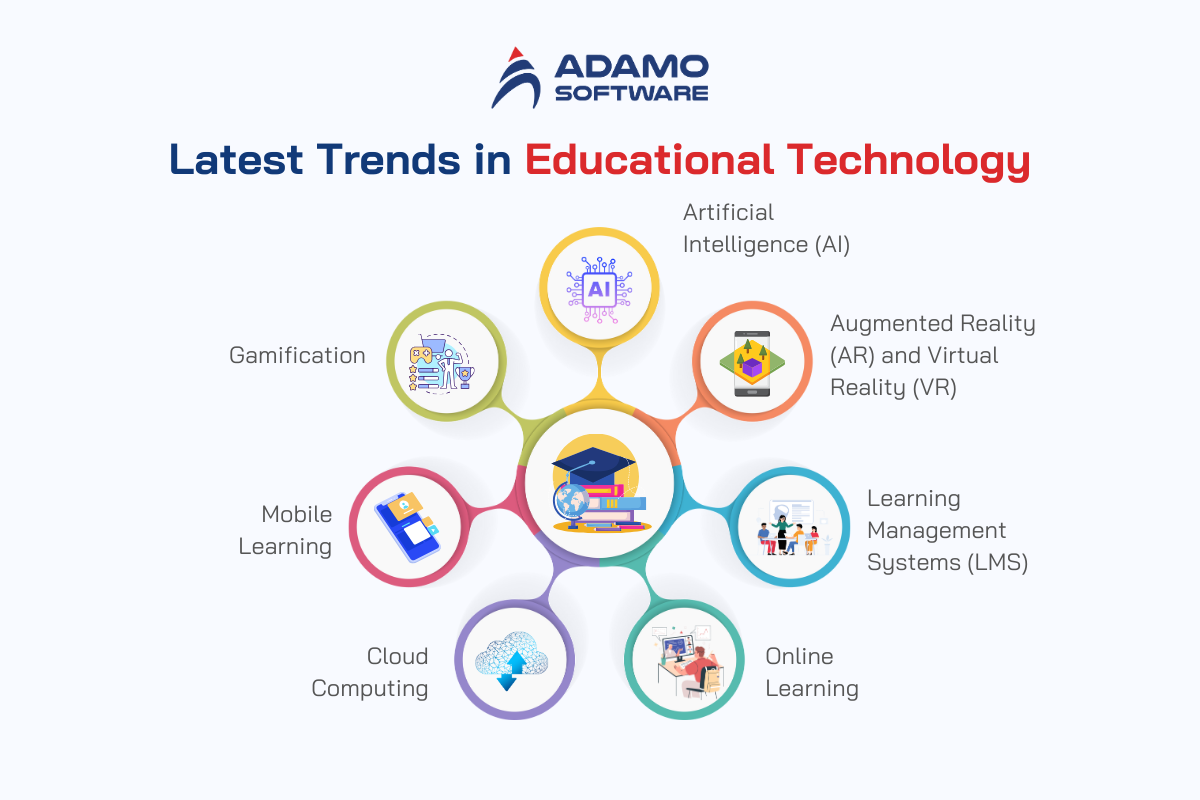
1. Artificial Intelligence (AI)
AI is recognized as the leading technological advancement that has affected the education sector. Using smart technologies, learning processes can adapt to the students personally to provide tailored learning. A growth of this number indicates that AI in education is on the rise, and the implementation is constantly increasing.
Also read: 20 AI in Education Examples to Watch Out
2. Augmented Reality (AR) and Virtual Reality (VR)
AR and VR are implemented in delivering education in a different dimension to the classroom. Such technologies facilitate students’ understanding of complicated ideas and increase their level of concern. The market of Both AR and VR in education is expected to be about $ 19.6 billion, according to estimates from Research and Markets. This growth emphasizes the need for instructional materials and spaces that are more interactive.
3. Learning Management Systems (LMS)
LMS platforms are now key components of the newest technology in education. They help in course management, communication between the instructor and the students, and student performance tracking. This global LMS market is further predicted to reach $13.4 billion in 2021 and reach $29.9 billion by 2026, which indicates a tight association of e-learning with digital learning solutions.
4. Online Learning
Online classes had become the norm even before the COVID-19 pandemic, however, the pandemic increased its rate. The eLearning market is expected to grow to $325 billion by 2025 as reported in eLearning Industry. These trends in educational technology portray a shift in the populace towards online learning and education.
5. Gamification
This is another new form of technology that implements the components of games into the educational process. According to the TalentLMS survey, learners were motivated when training was gamified at 83% while there was only a 61% motivation rate when training was not. This data highlights the usefulness of the concept of gamification in the process of increasing students’ interest and retention.
6. Mobile Learning
Mobile learning enables the student to learn on his/her smartphone or tablet hence flexibility is offered. It is forecasted that the global mobile learning market will increase its figures from $22.4 billion in 2019 to $80.1 billion by the year 2027 as presented by Global Market Insights. The trend helps to illustrate the issues related to access in the contemporary education system.
7. Cloud Computing
Cloud computing is gradually becoming an important infrastructure support for educational institutions due to its flexibility and economic data management systems. According to Technavio, cloud computing in the education market is expected to reach $25.41 billion. This trend depicts the growing dependency on cloud solutions for educational frameworks.
The trends of the evolutionary continuous perspective of educational technology trends are deep, and many of them play an important role in the transformation of the educational process. Artificial Intelligence, and Augmented and Virtual reality, in Learning Management Systems and online classes, these technologies enhance the mode of learning, making it more personalized, interactive, and convenient. It is crucial to keep abreast of such trends in education technology for educators and institutions to provide the best learning solutions. Therefore, as these trends emerge, they act as the key determinants of the future learning environment.
IV. Common Types of Devices Used in Education Technology
Educational technology refers to a broad list of gadgets that improve the process of teaching and learning. These devices alter classrooms and other learning environments as per the existing modern IT facilities. Here are some of the most common types:
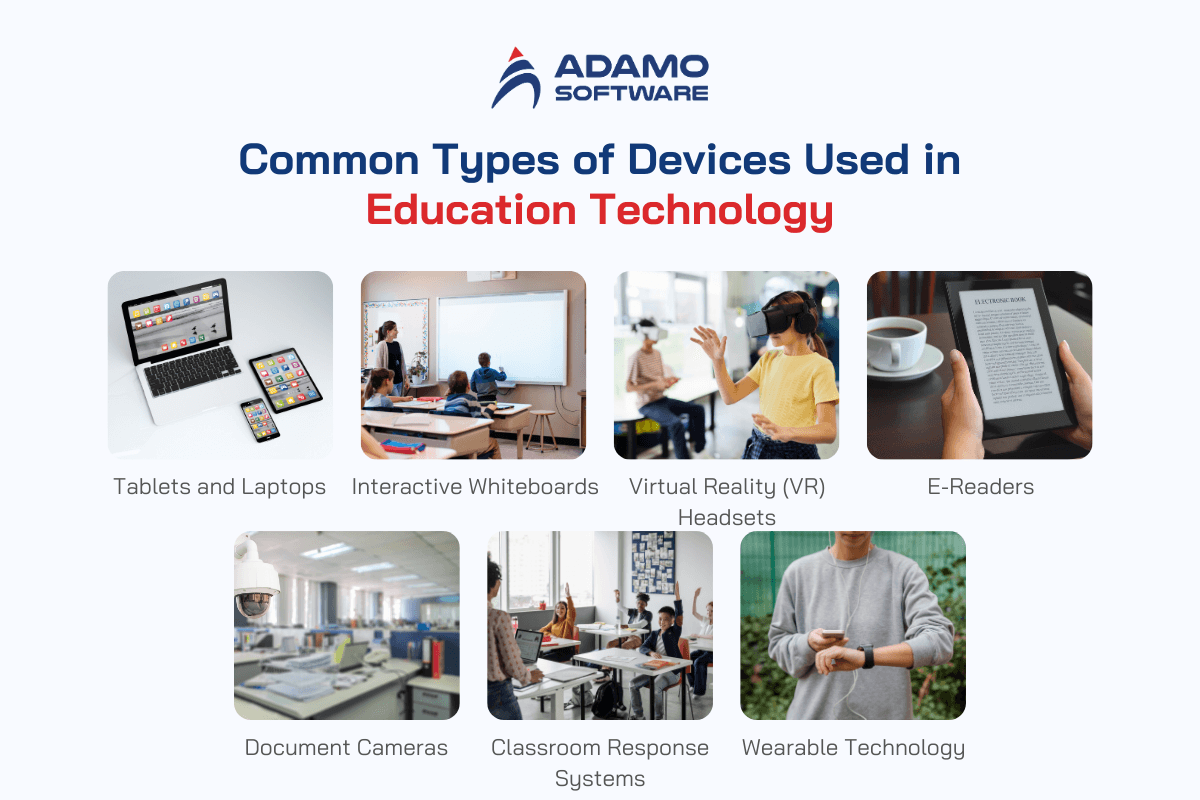
1. Tablets and Laptops
Tablets and laptops can be viewed as the necessities of the modern learning process. It makes it possible for students to obtain digital text, other content, and learning applications over the web. As trends in educational technology call for portability and flexibility, these devices align with the theme of personalization in learning. The trends can be used both in the classroom and outside of it. A market insight conducted by Futuresource Consulting noted that Tablets and laptops will keep growing in educational institutions for better education solutions.
2. Interactive Whiteboards
Among the important technologies in teaching, they include the touching of whiteboards. Such devices substitute blackboards and stimulate the quality of communication between teachers and students. Teachers can display multimedia content and take notes in it, write or draw on the content displayed, and take a picture of the notes they wish to use later. Thus, the lessons themselves become more fascinating and when it comes to changes in approach to delivering these lessons, this is much easier to arrange.
3. Virtual Reality (VR) Headsets
Virtual reality headsets are one of the newest additions to the educational technology trend, as they create very interactive learning experiences. The students can navigate through virtual space, go on virtual tours, and use virtual objects in 3-dimensional space. It also makes learning easier because it is always easier to understand something when you are actively involved than when you are just being taught. The increased development of Virtual Reality will increase its adoption in teaching and learning.
4. E-Readers
One of the most promising technological tools in education is E-readers. They assist students in getting hold of a lot of electronic books, tutorials, and other papers, making the standard textbooks as small as possible. E-readers are portable; they can be small, compact hand-held devices with features like notetaking, and definition searches that enhance learning.
5. Document Cameras
The document camera, also referred to as the visualizer, is one of the significant tools used in today’s classroom. Documents, books, and other small objects can also be introduced to the students with the help of the projector accessible to the teachers. This technology can be brought into teaching because it involves interaction. It is also very suitable for clear demonstrations of experiments, solutions to problems, and complex diagrams.
6. Classroom Response Systems
Clickers or classroom response systems are employed to elicit students’ immediate responses. These gadgets help teachers facilitate quizzes, polls, and assessments in class, allowing for a better understanding of students’ comprehension and participation. This concept is related to the current trends in information technology, where learning is set in motion and instantaneous feedback is provided.
7. Wearable Technology
The trends in educational technology encompass wearable technology as one of the latest trends in technology. Wearable technology, including smartwatches and fitness trackers. They can also be used to monitor student activity levels and health information. They can even be utilized for individualized instructional plans. In the future, as wearable technology continues to evolve, so will the ability to use it in educational settings.
Overall, the trends in educational technology suggest the usage of varied devices that facilitate teaching and learning. From tablets and interactive whiteboards to VR headsets and various types of wearable technology, these are part of modern technology in education. Keeping current with these technological trends in education is essential for educators and institutions wanting to deliver the best for learners. These trends’ integration will enable educational establishments to introduce more entertaining and effective training courses.
V. Final Thoughts
These trends are redesigning educational technology in terms of its delivery to learners and how instructors teach. In the future, emerging technologies such as AI, AR, and VR will help expand, enhance, and improve education. Such innovations are making learning experiences more effective and catering to students’ multiple needs. From smart boards to tablets, including VR headsets, these are indispensable in classrooms as they provide engaging educational processes.

Keeping abreast of the current trends in educational technology is relevant and imperative. Such approaches and tools entail a new approach to teaching and learning among the faculty. Thus, with high-tech products being supplied by Adamo Software, schools, and other institutions will be able to develop products more suitable for the modern world.
We also provide professional development and training for these technologies to permit proper implementation. Adopting these trends in educational technology is not for the sake of following the next big thing, but rather for improving the system, for a better, more future-proof education system.






